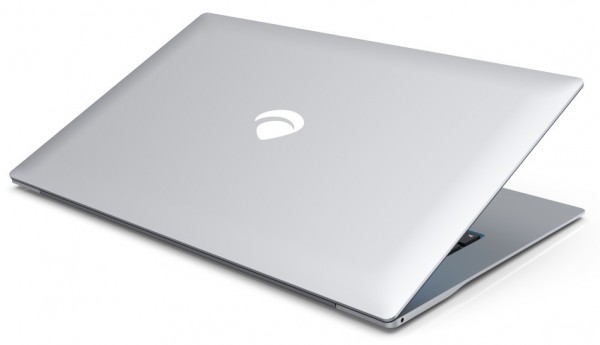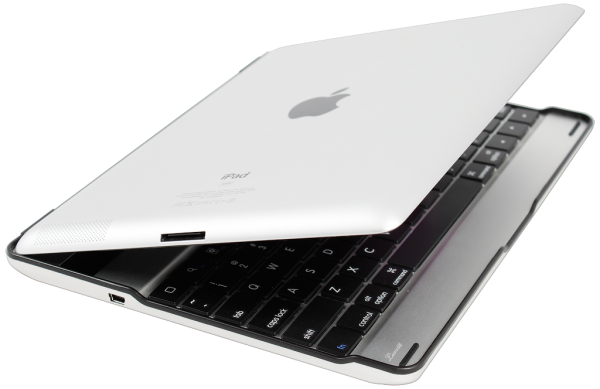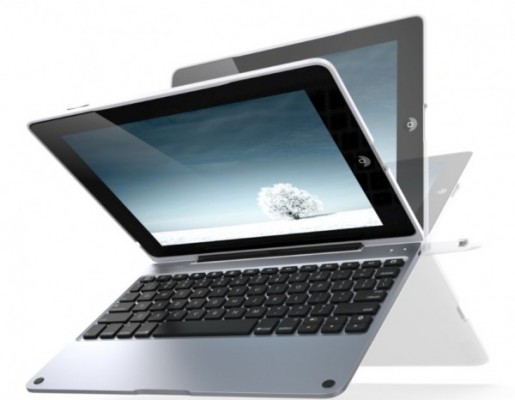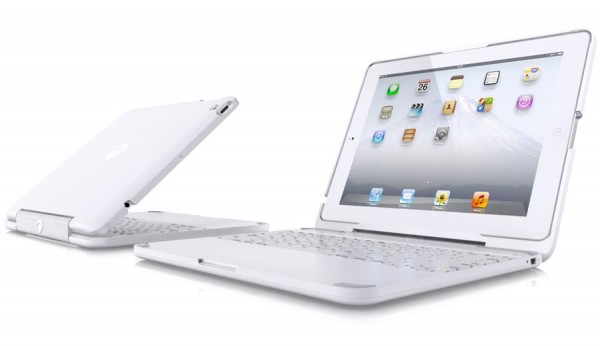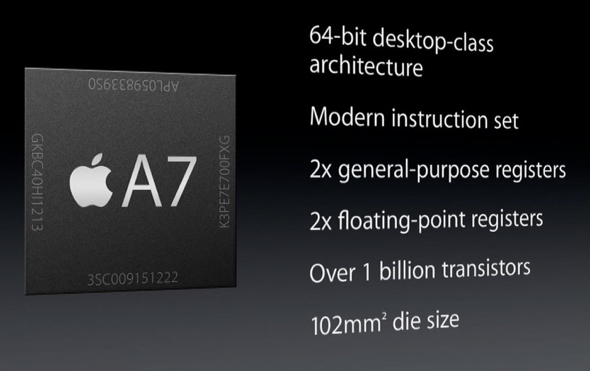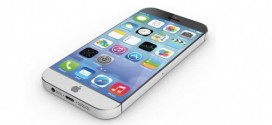At yesterday’s keynote, Apple changed the name for the big iPad, now calling it the “iPad Air”. It could be that they just wanted to make a more dramatic announcement for the new iPad, in a way that consumers will “get it”: it’s not just a new iPad, it’s a much lighter new iPad.
Another theory is that they are separating the tablets with different names, because they want to introduce a “different kind of iPad” in the future, and they want people to be able to make a clear distinction between them. What could this new iPad be called? My guess is it’s going to be called an “iPad Pro”, but instead of being just another regular iPad with perhaps a better processor, and a higher price, which wouldn’t make much sense as an extra product, I think it will actually be a notebook.
Why a notebook? Aren’t we moving to tablets?
Well, no quite. People still need their keyboards for work, and the 9.7″ screen is actually a little too small for work, especially if you add a keyboard to match that 9.7″ device, which also happens to be smaller in length in landscape mode, than other tablets, because of its 4:3 ratio, and that makes too crammed and harder to type on it.
An 11.1″ 16:9 screen would actually be significantly wider in landscape (almost as wide as an 11.6″ Macbook Air), with a keyboard wide enough to match it, so it should be pretty good for typing and working on it.
Why 11.1″?
Remember when Apple decided that the best way to be least disruptive to iOS developers when making a larger iPhone, was to add to its height, while keeping the width the same. By increasing the screen by ~14.3 percent, they turned the iPhone 4S from a 3.5″ phone into a 4″ one. If we do the same math with the 9.7″ iPad screen, we get an ~11.1″ screen, that has a 16:9 ratio, just like the iPhone 5S.
But what about the resolution? If we increase the height (or width when put in landscape), by the same amount as Apple did for the iPhone 5S (1136/960), we get a new 16:9 resolution of 2424×1536. The PPI will remain the same just like for the 9.7″ iPad (264 PPI).
The developers won’t be disrupted much, and they can just add an extra panel to their apps, perhaps on the left, like we saw for iWorks on the Macbooks. Of course, they will be free to take advantage of the extra width (in landscape) however they like. Apple may even decide to add split-screen functionality (which they should, to increase productivity), and take advantage of that extra screen real estate.
Why an iOS Notebook?
I don’t think there’s any doubt in anyone’s mind that iOS is the future for Apple, and not Mac OS X. While OS X will still probably exist even 10 years from now, the latest market sales show it’s declining. Even if the newly announced Macbooks spark some excitement in the market, it will only be relatively temporary, and won’t add up to much in the end. Macbooks will never come close to the popularity of iOS devices.
In a couple of years there should be over a billion iOS devices out there. A lot of those people will be so used to iOS by then, and iOS apps will have become so advanced (Apple is already pushing in that direction with the new and improved iWork and so on), that they will want to use iOS to do all of their work on iOS devices.
Many people already use their iPads with Bluetooth keyboards, most of them being very ugly, while some looking a little more acceptable. But all of them are pretty clunky solutions to what these people are already looking for: an iPad Pro laptop (instead of a Macbook Air).
However, if Apple creates a notebook with touch, they need to make sure the screen won’t flinch at all. One of the reasons I don’t like touchscreen laptops is that most of them still tend to have very weak hinges, and the screen moves a lot back and forth when you touch it, making for a poor experience, and after a few thousand pushes, you might end up breaking its hinges.
Apple will need to fix this, but they should also keep the touchpad. People aren’t going to use touch all the time on their notebook, but it should be there for those few times they do want to use it.
Specs and Price
First off, I think Apple is really starting to push it with 16 GB as default storage for the base model. Next year they need to start offering not just 32 GB for the base models, but also 2 GB of RAM. It will be 4 years in 2014 since Apple used that storage amount in 2010, which means that storage should be about 4x cheaper compared to what it cost in 2010, if we account that prices drop by ~30 percent every year, for the same components. That means a 64 GB drive should cost them as much as the 16 GB one cost them for the iPad in 2010. The retina resolutions have also added a lot of “bulk” to the apps’ graphics, and people are starting to feel short on storage.
An iPad Pro with a screen that is a little bigger, has 64 GB of storage, and a keyboard, should cost no more than $699, for the base option. This device should not only make them at least as much profit as the other iPads are making them, but it also feels like the sweet spot pricing for such a machine.
If they are really greedy, they can even start it with 32 GB in 2014, and move to 64 GB in 2015, but I really think a “pro” device deserves 64 GB by default, especially since prices have dropped so much. It’s a “work laptop”, so it should have at least a decent amount of storage. Ultimately, 64 GB is still quite low compared to even cheaper laptops.
The consumers will see it as $200 more expensive than iPad Air, but it will offer them a larger screen, a keyboard, 64 GB of storage, 2 GB of RAM, and at least an A7X processor, to handle that extra resolution.
We could also see an A8 chip appear for the first time in the iPad Pro, because I think it makes sense for Apple’s latest gen chip and most powerful chip to appear in an “iPad Pro”. The second reason is because although Apple named their A7 CPU core “Cyclone”, I don’t think they changed it all that much since last year, other than making it compatible with the 64-bit ARMv8 architecture.
It’s not typical for companies to completely redesign their CPU every year. A generation usually lasts 2 years, and Apple has just launched Swift in 2012. It’s possible Apple had 2 teams working in parallel, one working on the ARMv7 Swift, and another working on the 64-bit Cyclone chip, but I think either way, we’re going to see the true “next-gen” successor of Swift next year.
The iPad Pro chip will need to be more powerful than the one in the iPhone or other iPads, so my guess is it will come at 20nm, and have increased frequency compared to the A7. It might also be quad-core, which would be a first for Apple, but it would help to make the device feel “fast” even with the extra multi-tasking and as a “work notebook”.
What do you think? Would all of these improvements make you want to pay $700 for an iPad Pro notebook, to completely replace your Macbook Air?
 TechDomino
TechDomino
